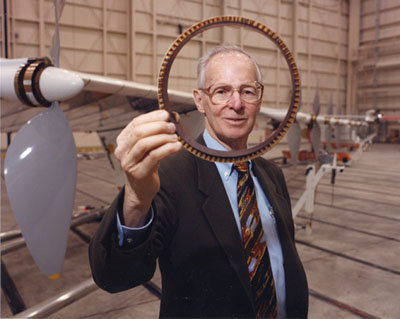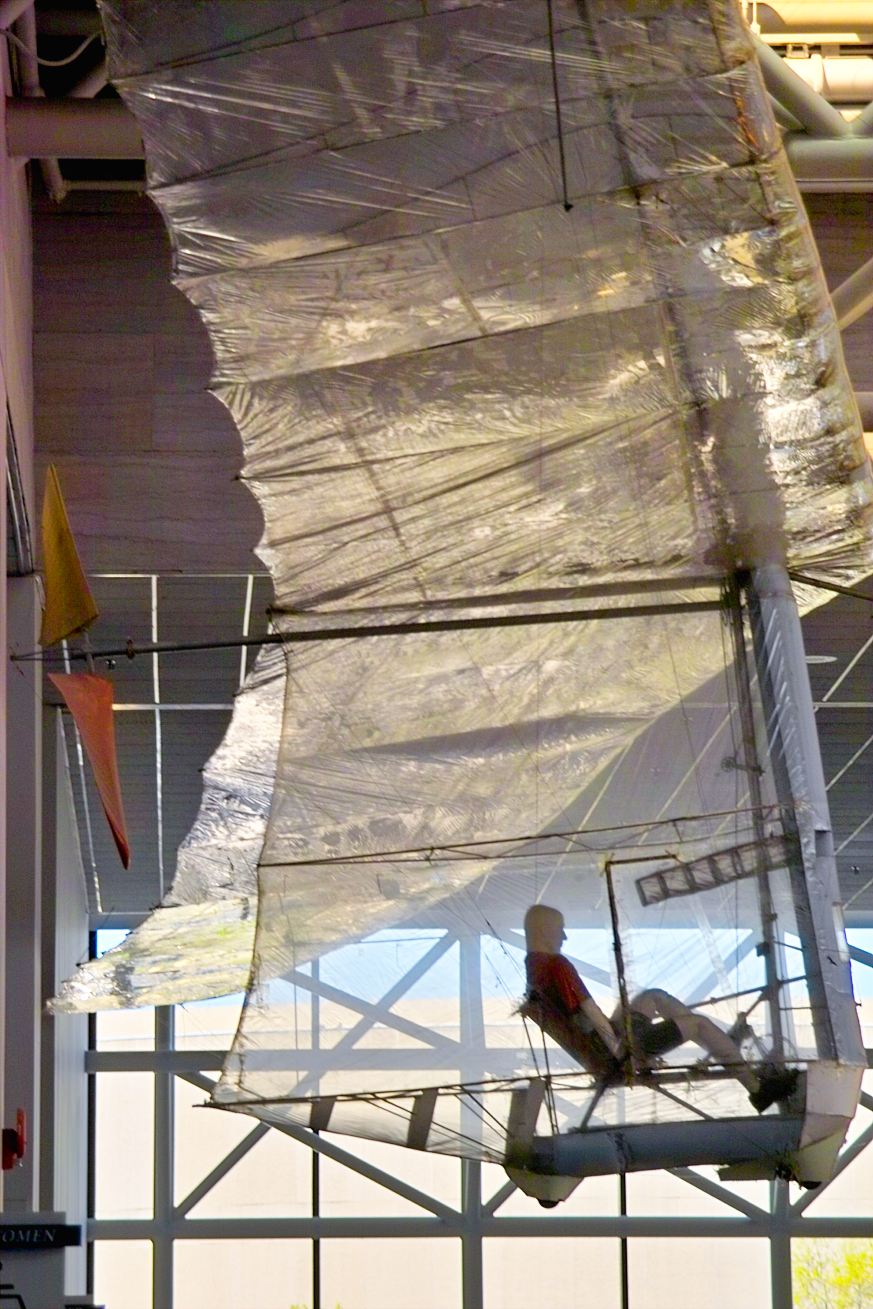|
SkyTote
The SkyTote is an unmanned aerial vehicle (UAV), tail-sitter Vertical Take-Off and Landing (VTOL)-fixed wing hybrid plane, which attains the advantages of both airplane designs (respectively VTOL takeoff capability and decreased energy usage). In order to control the vehicle when transitioning between vertical take-off to forward flight, an adaptive neural network controller was designed by Guided Systems Technologies and used on the vehicle. The vehicle was developed by AeroVironment, under a contract given by the Air Force Research Laboratory, and its primary purpose is cargo-delivery. The SkyTote is special as it features a fly-by-wire system with remote control. As of August 2010, the SkyTote appears as a past product on the company websites, not as a current. Turn Key VTOL UAV Systems See also * NASA Puffin The NASA Puffin is a concept for a single person, electrically powered vertical takeoff and landing (eVTOL) aircraft designed by engineers from NASA, MIT, Georgia T ... [...More Info...] [...Related Items...] OR: [Wikipedia] [Google] [Baidu] |
AeroVironment Aircraft
AeroVironment, Inc. is an American defense contractor headquartered in Arlington, Virginia, that designs and manufactures unmanned aerial vehicles (UAVs). Paul B. MacCready Jr., a designer of human-powered aircraft, founded the company in 1971. The company is best known for its lightweight human-powered and solar-powered vehicles. The company is the US military's top supplier of small drones —notably the Raven, Switchblade, Wasp and Puma models. History On January 7, 2024, AeroVironment was sanctioned by the Chinese government due to U.S. arms sales to Taiwan. On March 4, 2025, the Chinese Ministry of Commerce placed 15 U.S. entities (including AeroVironment) on its export control list, barring the export of dual-use commodities to that business. Vehicles Among the vehicles the company built are: * Gossamer Condor – The first successful human-powered airplane. The Gossamer Condor is on display at the US National Air and Space Museum (NASM), since it won the first Kre ... [...More Info...] [...Related Items...] OR: [Wikipedia] [Google] [Baidu] |
Tail-sitter
A tail-sitter, or tailsitter, is a type of VTOL aircraft that takes off and lands on its empennage, tail, then tilts horizontally for forward flight. Originating in the 1920s with the inventor Nikola Tesla, the first aircraft to adopt a tail-sitter configuration were developed by Nazi Germany during the Second World War. Development of such aircraft spiked during the late 1940s and 1950s, as aircraft designers and defence planners alike recognised the potential value of fixed-wing aircraft that could perform both a vertical take-off and vertical landing while also transitioning into and out of conventional flight. Inherent problems with tail-sitter aircraft were poor pilot visibility and control difficulties, especially during vertical descent and landing. Programmes to develop manned tail-sitters were typically terminated in the form of the more practical thrust vectoring approach, as used by aircraft such as the Hawker Siddeley Harrier and Yakovlev Yak-38. Description A tail- ... [...More Info...] [...Related Items...] OR: [Wikipedia] [Google] [Baidu] |
Tailsitter Aircraft
A tail-sitter, or tailsitter, is a type of VTOL aircraft that takes off and lands on its tail, then tilts horizontally for forward flight. Originating in the 1920s with the inventor Nikola Tesla, the first aircraft to adopt a tail-sitter configuration were developed by Nazi Germany during the Second World War. Development of such aircraft spiked during the late 1940s and 1950s, as aircraft designers and defence planners alike recognised the potential value of fixed-wing aircraft that could perform both a vertical take-off and vertical landing while also transitioning into and out of conventional flight. Inherent problems with tail-sitter aircraft were poor pilot visibility and control difficulties, especially during vertical descent and landing. Programmes to develop manned tail-sitters were typically terminated in the form of the more practical thrust vectoring approach, as used by aircraft such as the Hawker Siddeley Harrier and Yakovlev Yak-38. Description A tail-sitter sits ... [...More Info...] [...Related Items...] OR: [Wikipedia] [Google] [Baidu] |
AeroVironment
AeroVironment, Inc. is an American Arms industry, defense contractor headquartered in Arlington, Virginia, that designs and manufactures unmanned aerial vehicles (UAVs). Paul MacCready, Paul B. MacCready Jr., a designer of human-powered aircraft, founded the company in 1971 in aviation, 1971. The company is best known for its lightweight Human-powered transport, human-powered and solar-powered vehicles. The company is the US military's top supplier of small drones —notably the AeroVironment RQ-11 Raven, Raven, AeroVironment Switchblade, Switchblade, AeroVironment Wasp III, Wasp and AeroVironment RQ-20 Puma, Puma models. History On January 7, 2024, AeroVironment was Chinese sanctions, sanctioned by the Chinese government due to U.S. arms sales to Taiwan. On March 4, 2025, the Ministry of Commerce (China), Chinese Ministry of Commerce placed 15 U.S. entities (including AeroVironment) on its export control list, barring the export of dual-use commodities to that business. Vehicl ... [...More Info...] [...Related Items...] OR: [Wikipedia] [Google] [Baidu] |
Unmanned Aerial Vehicle
An unmanned aerial vehicle (UAV) or unmanned aircraft system (UAS), commonly known as a drone, is an aircraft with no human pilot, crew, or passengers onboard, but rather is controlled remotely or is autonomous.De Gruyter Handbook of Drone Warfare; 2024. e-ISBN (PDF) 978-3-11-074203-9.H. Pan; M. Zahmatkesh; F. Rekabi-Bana; F. Arvin; J. HuT-STAR: Time-Optimal Swarm Trajectory Planning for Quadrotor Unmanned Aerial Vehicles IEEE Transactions on Intelligent Transportation Systems, 2025. UAVs were originally developed through the twentieth century for military missions too "dull, dirty or dangerous" for humans, and by the twenty-first, they had become essential assets to most militaries. As control technologies improved and costs fell, their use expanded to many non-military applications. These include aerial photography, area coverage,F. Rekabi-Bana; Hu, J.; T. Krajník; Arvin, F.,Unified Robust Path Planning and Optimal Trajectory Generation for Efficient 3D Area Coverage of ... [...More Info...] [...Related Items...] OR: [Wikipedia] [Google] [Baidu] |
Unmanned Aerial Vehicles Of The United States
An uncrewed vehicle or unmanned vehicle is a vehicle without a person on board. Uncrewed vehicles can either be under telerobotic control—remote controlled or remote guided vehicles—or they can be autonomously controlled—autonomous vehicles—which are capable of sensing their environment and navigating on their own. It has been reported that the armed forces of more than 100 countries have approximately 170 different types of drones in service. Types There are different types of uncrewed vehicles: * Remote control vehicle (RC), such as radio-controlled cars or radio-controlled aircraft * Unmanned ground vehicle (UGV), such as the autonomous cars, or unmanned combat vehicles (UCGV) **Self-driving truck **Driverless tractor * Unmanned ground and aerial vehicle (UGAV), unmanned vehicle with hybrid locomotion methods * Unmanned aerial vehicle (UAV), unmanned aircraft, either fixed-wing or rotorwing, commonly known as "drone" ** Unmanned combat aerial vehicle (UCAV) **Medium ... [...More Info...] [...Related Items...] OR: [Wikipedia] [Google] [Baidu] |
2000s United States Experimental Aircraft
S, or s, is the nineteenth letter of the Latin alphabet, used in the English alphabet, the alphabets of other western European languages and other latin alphabets worldwide. Its name in English is ''ess'' (pronounced ), plural ''esses''. History Northwest Semitic šîn represented a voiceless postalveolar fricative (as in 'ip'). It originated most likely as a pictogram of a tooth () and represented the phoneme via the acrophonic principle. Ancient Greek did not have a "sh" phoneme, so the derived Greek letter Sigma () came to represent the voiceless alveolar sibilant . While the letter shape Σ continues Phoenician ''šîn'', its name ''sigma'' is taken from the letter ''Samekh'', while the shape and position of ''samekh'' but name of ''šîn'' is continued in the '' xi''. Within Greek, the name of ''sigma'' was influenced by its association with the Greek word (earlier ), "to hiss". The original name of the letter "Sigma" may have been ''san'', but due to the ear ... [...More Info...] [...Related Items...] OR: [Wikipedia] [Google] [Baidu] |
Mid-wing Aircraft
A monoplane is a fixed-wing aircraft configuration with a single mainplane, in contrast to a biplane or other types of multiplanes, which have multiple wings. A monoplane has inherently the highest efficiency and lowest drag of any wing configuration and is the simplest to build. However, during the early years of flight, these advantages were offset by its greater weight and lower manoeuvrability, making it relatively rare until the 1930s. Since then, the monoplane has been the most common form for a fixed-wing aircraft. Characteristics Support and weight The inherent efficiency of the monoplane is best achieved in the cantilever wing, which carries all structural forces internally. However, to fly at practical speeds the wing must be made thin, which requires a heavy structure to make it strong and stiff enough. External bracing can be used to improve structural efficiency, reducing weight and cost. For a wing of a given size, the weight reduction allows it to fly slower ... [...More Info...] [...Related Items...] OR: [Wikipedia] [Google] [Baidu] |
NASA Puffin
The NASA Puffin is a concept for a single person, electrically powered vertical takeoff and landing (eVTOL) aircraft designed by engineers from NASA, MIT, Georgia Tech, and other research institutions. First introduced in 2009, Puffin was a critical project to test the feasibility and capabilities of electric propulsion. The design features a lightweight carbon-fiber frame, a tiltrotor system, and a fully electric powertrain allowing it to be nearly silent. The concept design was projected to be capable of flying a single person at a cruise speed of 150 miles per hour (241 km/h), with range expected to be less than 50 miles (80 km) with 2010-vintage Lithium-iron-phosphate battery technology. The design specified a 14.5 foot (4.4196 m) wingspan, standing 12 feet (3.65 m) tall on the ground in its take-off or landing configuration. A one-third scale model was built in 2010, and was briefly displayed including appearing in one episode of a Discovery Channel series on invention. ... [...More Info...] [...Related Items...] OR: [Wikipedia] [Google] [Baidu] |



